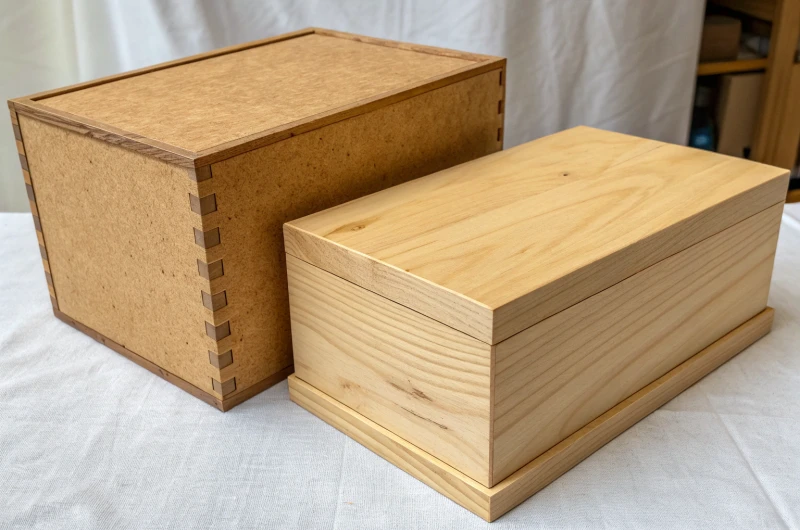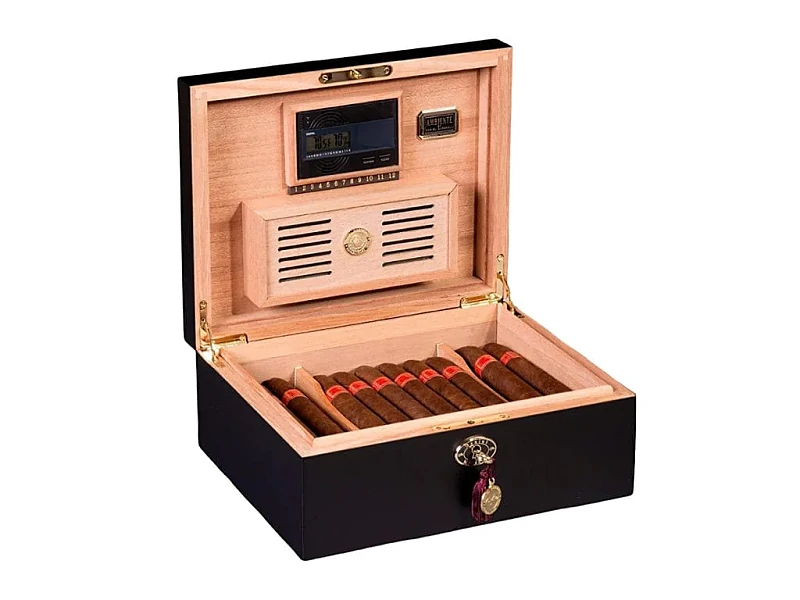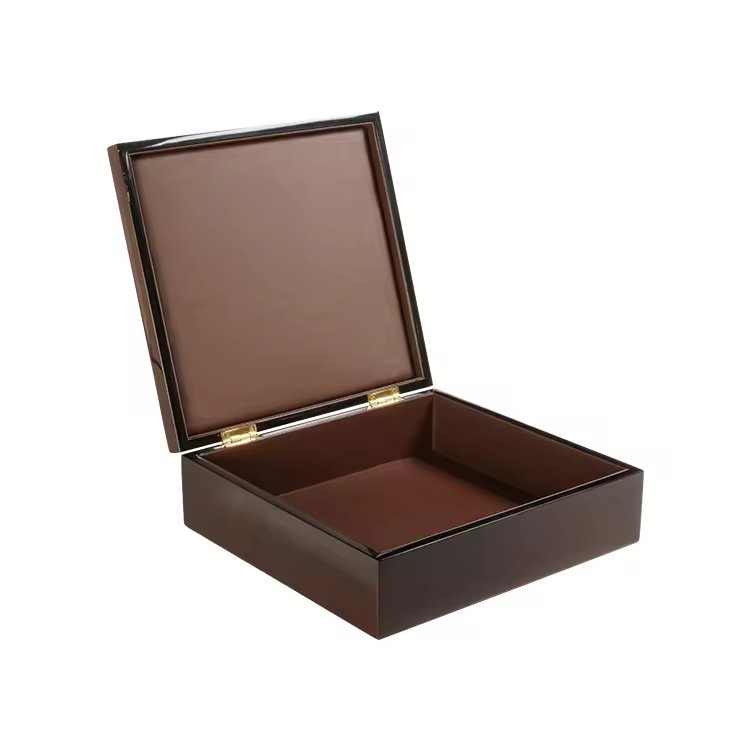
Budget allocation in wooden box customization often confuses clients because every option looks important.
The fastest way to decide is to prioritize structure first, then finishing, and finally material, while adjusting based on brand positioning and client goals.
Clear priorities reduce confusion, speed up decision-making, and prevent overspending on non-essential details.
A beautiful box with poor structure is useless.
Structural stability and functionality must take the first share of the budget because they determine usability, durability, and overall client satisfaction.

I always advise clients to start with structure. If the box does not open smoothly, align properly, or protect the product inside, finishing and material choices cannot compensate. A cigar box that fails to close tightly or a jewelry box with a loose hinge becomes a liability for the brand. Structural failure is what clients notice first.
I remember a case with a watch box project where the brand focused on exotic veneer before confirming the internal structure. After prototypes, we realized the cushion size was too small for larger watches. All the expensive veneer was wasted because the structure failed to serve its purpose. This mistake reinforced my belief that budget must prioritize structure.
Key Structural Priorities
- Lid alignment and hinge strength
- Internal compartment sizing
- Stability under handling and shipping
- Protection of delicate items
Spending here ensures the box functions as intended. Only after this foundation is secured should finishing and materials be considered.
How can finishing techniques (lacquer, inlay, engraving) elevate perceived value with moderate cost?
Finishing is where clients see luxury.
Finishing techniques like lacquer, inlay, or engraving elevate perceived value significantly, often at a moderate cost compared to materials.

Once the structure is sound, finishing becomes the focus. Clients associate gloss, smoothness, and artistic detail with luxury. A piano lacquer finish or metal inlay immediately communicates value. The advantage is that these techniques often cost less than upgrading materials. For example, a simple MDF core box can feel premium with multiple lacquer layers, while solid wood with poor finishing feels cheap.
I worked with a cigar brand that wanted a high-end feel but had a limited budget. Instead of solid rosewood, we used veneered MDF and invested more in 12 layers of glossy lacquer and gold hot-stamping. The final result looked luxurious, and the brand saved 30% on costs. Finishing allowed them to compete with more expensive products without overspending.
Finishing Options and Effects
| Tecnica | Effect on Value Perception | Livello di costo |
|---|---|---|
| Lacca ad alta lucentezza | Luxury, reflective surface | Medio |
| Intarsio di impiallacciatura | Natural elegance, exclusivity | Medio-alto |
| Engraving/Stamping | Branding, personalization | Medio-basso |
| Matte texture | Modern, understated style | Medio |
Finishing is the “visual hook.” It creates the first impression that convinces buyers of quality.
What role does material choice (solid wood, veneer, eco-friendly options) play in balancing luxury and budget?
Materials tell the story of authenticity and sustainability.
Material choice defines the box’s foundation but should be balanced between luxury appeal, durability, and cost-efficiency.

While structure is about function and finishing is about perception, materials add credibility. Solid wood conveys authenticity, while veneers provide flexibility at lower cost. Eco-friendly materials appeal to modern buyers concerned about sustainability. The key is not always to choose the most expensive wood but to match material selection with the client’s brand story.
I once worked with a wine box project for a premium but eco-conscious brand. Instead of mahogany, we chose FSC-certified birch veneer. Combined with a matte finish, the boxes looked elegant but aligned with their sustainability goals. The client’s customers appreciated the eco-friendly message as much as the product itself.
Confronto tra i materiali
| Materiale | Pro | Contro | Costo |
|---|---|---|---|
| Legno massiccio | Premium, durable, authentic | Expensive, heavy, less flexible | Alto |
| Veneer + MDF | Cost-effective, wide design options | Less “authentic” feel | Medio |
| Eco-friendly board | Sustainable, appeals to consumers | Limited finishes, durability vary | Medio-basso |
By balancing material choice with budget, we ensure both luxury appeal and practical cost management.
How to identify which element — structure, finishing, or material — best matches the brand’s positioning?
Not every brand values the same priorities.
Identifying the right priority depends on the brand’s image: luxury brands lean on finishing and material, while practical brands focus more on structure.
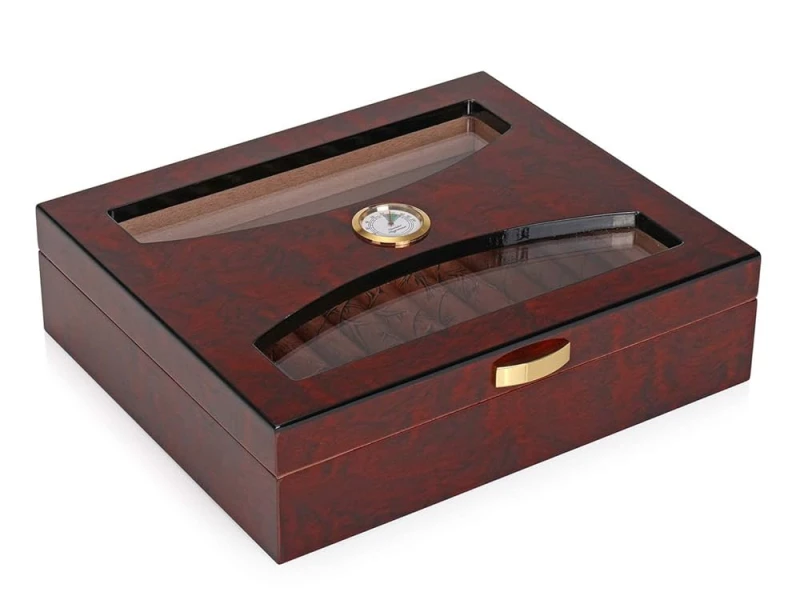
Different markets emphasize different things. A cigar brand targeting collectors may demand rare wood veneer. A jewelry brand may emphasize glossy finishing to reflect luxury. A wine brand shipping worldwide may focus on structure for protection during transport. Understanding brand positioning helps us guide budget allocation.
Matching Priorities to Brand Positioning
| Brand Type | Priority Focus |
|---|---|
| Ultra-luxury brand | Material + Finishing |
| Mid-range premium | Structure + Finishing |
| Eco-conscious brand | Material + Structure |
| Practical retail brand | Structure first |
I always ask clients to describe their core identity: “Do you want your box to feel exclusive, sustainable, or reliable?” The answer directs where most of the budget should go.
Why is it effective to design a “must-have vs. nice-to-have” priority list for budget clarity?
Clients often want everything, but not everything fits the budget.
Creating a must-have vs. nice-to-have list forces clear budget allocation, preventing confusion and unnecessary upgrades.
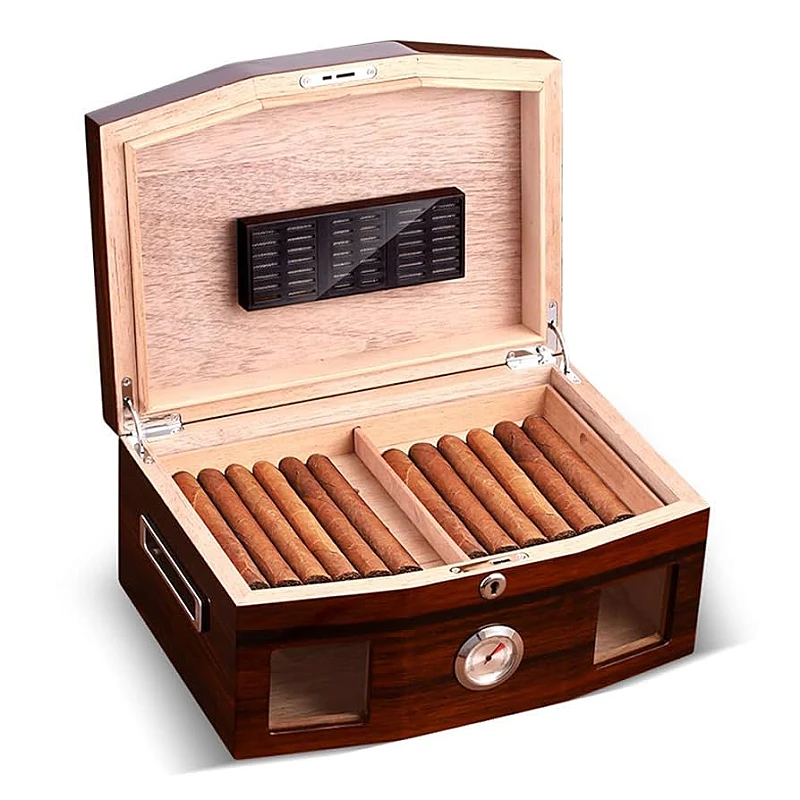
I guide clients to divide features into two categories. Must-haves are non-negotiable: strong structure, smooth hinges, brand logo. Nice-to-haves are optional: gold foil lining, exotic wood, complex inlay. By writing this list together, the client sees where the budget should go first. It avoids endless back-and-forth when costs rise.
Example Priority List for a Jewelry Box
- Must-have: Stable structure, perfect velvet lining, clear hot-stamped logo.
- Nice-to-have: Exotic veneer, gold-plated hinge, engraving on the lid.
This exercise makes decision-making faster. Clients feel in control and suppliers avoid wasting resources.
How can transparent cost breakdowns help clients make faster, more confident decisions?
Hidden costs create delays and mistrust.
Transparent cost breakdowns let clients see where money goes, helping them decide quickly and confidently on trade-offs.
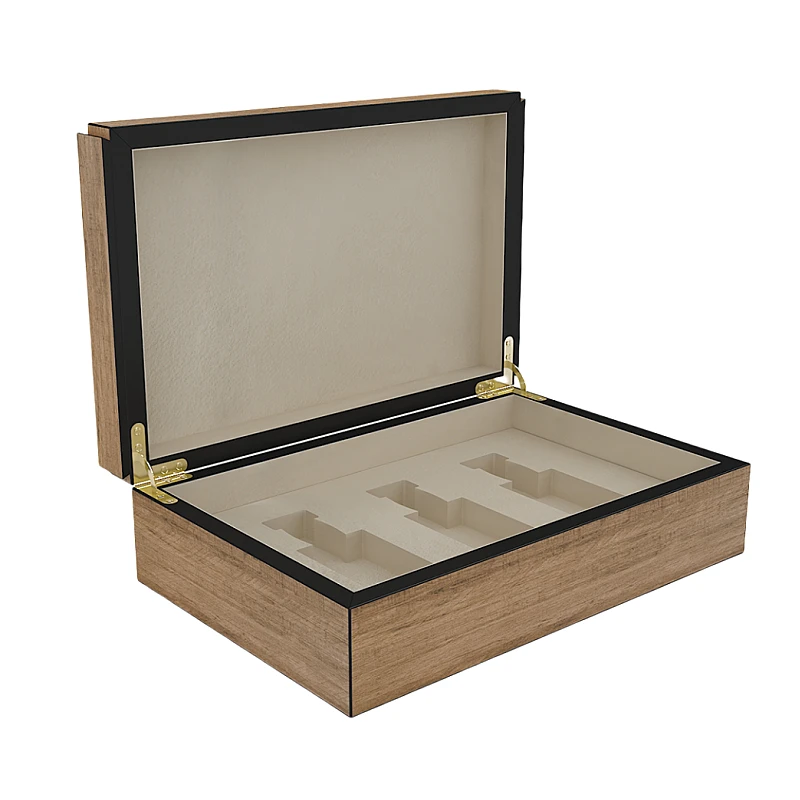
I always provide itemized quotations that separate structure, finishing, and material costs. For example, instead of “wooden box: $20,” I show “structure: $8, finishing: $7, material: $5.” This transparency shows clients how upgrades affect price. If they want to add 5 more lacquer layers, they can see the exact cost impact.
I once worked with a perfume brand where the buyer struggled to get budget approval internally. By showing a transparent cost sheet, they presented a clear case to their management: “Here’s where each dollar goes.” Approval came faster, and the project moved ahead smoothly.
Benefits of Transparent Costing
- Chiarezza: Clients understand trade-offs.
- Velocità: Decisions are made faster.
- Trust: Buyers feel treated fairly.
- Flessibilità: Easy to adjust without confusion.
This practice builds confidence and reduces negotiation time, which benefits both sides.
Conclusione
Clients decide budgets faster when structure comes first, finishing second, and material last, with adjustments made based on brand goals and transparency.
Nome del marchio: WoodoBox
Slogan: Scatole di legno personalizzate, realizzate alla perfezione
Sito web: www.woodobox.com
WhatsApp: +86 18359265311

